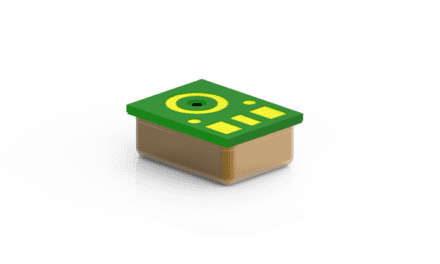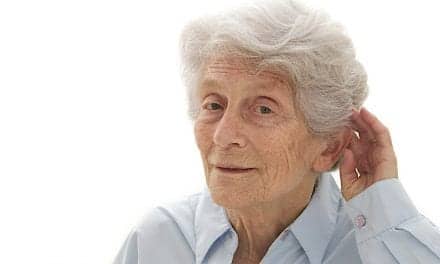Among the many fitting options now available for dispensing professionals is the “disposable” hearing aid. The presence of this option denotes the arrival of another classification in hearing aid types. If this new category is called “disposable,” it stands to reason that the others could be called “durable.” For clarity, this article will define a disposable hearing instrument as one that can be worn for a short period of time and then discarded. While the ideas presented in the following article relate primarily to disposable hearing instruments (i.e., the Songbird Disposable Hearing Aid), some of the concepts may also apply to the new class of entry-level instruments (e.g., GN ReSound Avance, Sonic Innovations Conforma, etc.) on the market.
A Disposable Hearing Prosthesis
The concept of a disposable prosthesis is widely known, with disposable contact lenses being the most prominent example. Like glasses, the design of hearing instruments traditionally has been “durable.” Hearing instruments, or their couplers, are custom fitted and use replaceable batteries as the power source. Traditional hearing instruments, which are electronic devices, were designed to last numerous years and be repairable over time.

True mass production in manufacturing of hearing aids has always been limited. Different models are required for different hearing losses, and there is a need for customization in order to properly satisfy the hearing-impaired consumer. Present industry figures show that 80-85% of all aids dispensed are custom fitted.
Disposable hearing instrument manufacturing utilizes the production cost benefits of true mass production. By using the one-size approach, Songbird Medical provides a hearing instrument at a cost of $39 to the end-user. The instrument has a number of fitting configurations, but essentially uses one technology amplification strategy. Current durable hearing instruments cost from $500-3500, encompassing 300+ models from more than 45 laboratories. When considering programmable instruments alone, the individual “proprietary” technologies available number well over 15.
Fees for Services:
A Whole New Ballgame
Disposable (as well as entry-level) hearing instruments pose enormous potential changes for the hearing care field relative to how professional services will be offered. The concept of “bundling” and “unbundling” fees for audiological and/or hearing aid related services has been around since the 1970s. According to HR, 76% of all dispensing offices bundle their fees1, and it appears that a majority of dispensing sites—whether managed by hearing instrument specialists, audiologists or medical doctors—prefer the bundled concept. Though not frequently asked, clients may also prefer bundled pricing because it generally affords them unlimited professional access in the hearing instrument fitting process.
The advent of a $39 hearing instrument changes fee structures. Unbundling becomes an attractive alternative, if not a necessity, for the dispensing field. The hearing care professional now needs to separate each item of service involved in the testing and fitting of a hearing instrument. Any part of the process that includes time and professional skills needs to be unbundled and priced according to the cost accounting of individual offices/practices.

Fig. 1. Handout detailing fees for services. It should be noted that the author’s dispensing office also offers other service options designed to accommodate various client needs (e.g., extended professional service contracts, etc.).
It should be recognized that unbundled fees are not foreign concepts to many hearing care providers. Medicare and managed care organizations have always used the Fee-for-Service structure, as have most hearing care offices that do business with these providers. Shown below is a copy of the “Disposable Hearing Aids Audiologic Fee for Services” sheet (Fig. 1) used in our particular practice and market in West Chester, PA (a suburb of Philadelphia). Note that we have modeled it, to some extent, on the Medicare List for office visits.
Like internists, hearing care professionals cannot always determine the length of a patient visit. Rehabilitation time is dictated by the client’s needs. Therefore, the sheet shows two options for office visit charges: brief and extended. Also note on Fig. 1 the real-ear and APHAB listings. These are shown because of clinician choice. With the Songbird instrument, the option to change response is actually a change of hearing aid. Therefore, if real ear measurement or APHAB suggests modifications, these are accomplished by changing the actual hearing aid.
Patient Education
Patient education and information transfer are major roles for hearing care professionals. Patient choice has expanded enormously in the last 10 years, and it is not unusual to see clients come into the office who are wrestling with conflicting information about hearing care issues.
| A Consumer’s Guide to Disposable versus Durable Hearing Aids
As part of the increasing options available to people who have hearing impairment, we now offer “disposable” hearing aids. Like glasses and contact lenses, these aids are an option for some people. Traditional hearing aids, which can be called “durable,’” have different benefits. While the goal of both disposable and durable hearing aids is to improve hearing and communication abilities, durable and disposable aids do differ is some substantial ways. This short guide is intended to provide you with the information you need to make an intelligent choice based upon understanding of the benefits and limitations of both disposable and durable hearing aids. 1. Basic Facts
2. Comparison of Disposable & Durable Aids
|
||
| Fig. 2. Example of handout on disposable hearing aids. |
Therefore, methods to increase the client’s education and participation in the selection and fitting process are vital components in overall client satisfaction. To help in a client’s understanding of disposable instruments, our practice has created “A Consumer’s Guide to Disposable Versus Durable Hearing Aids” handout (Fig. 2). This information handout is written in layman’s language. Many of the elements described reflect the specific practice standards of our office and market; similar handouts might differ substantially from one practice setting to the next.
Summary
Due to the acceleration of technology, change is now the norm for all hearing care offices. Technology’s effect is not only improving our clients’ hearing and communication abilities, but also changing the way hearing care professionals provide services, educate their clients and conduct business. Digitally controlled analog and DSP instruments involved us more directly with patient satisfaction and outcomes. Improved measures of fittings and verification procedures have increased our number of interventions in customizing the acoustic results of fittings. Changes provided by disposable hearing aids include making amplification available to a greater number of first-time hearing instrument users at lower costs. The change from durable instruments to an option that includes disposable is radical enough to require a concomitant change in the costs and pricing strategies used by dispensing professionals.
If the change is handled correctly, the hearing care field should see an increase in customers and, ultimately, more people who are enjoying the benefits of improved hearing health.

Correspondence can be addressed to HR or Joel Mynders, A.P. Mynders & Assoc., Inc., First Digital Hearing Aid Center, 129 N. Church St., West Chester, PA 19380; fax: (610) 436-5081.




